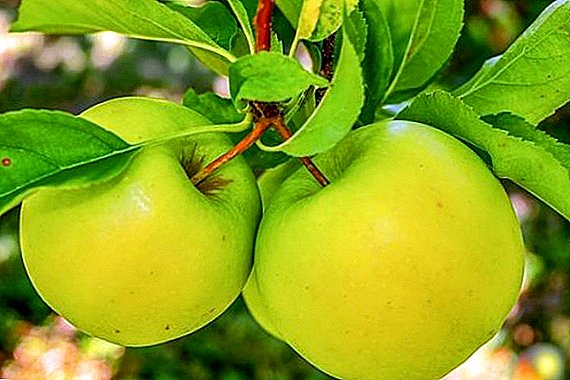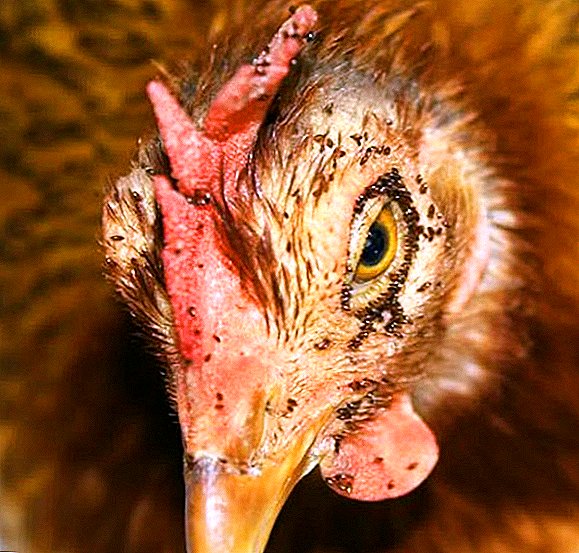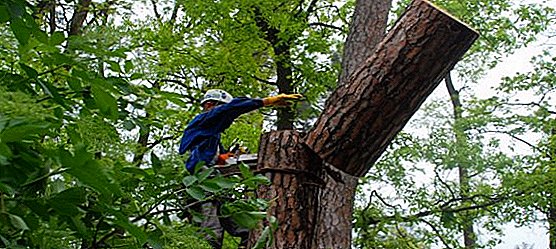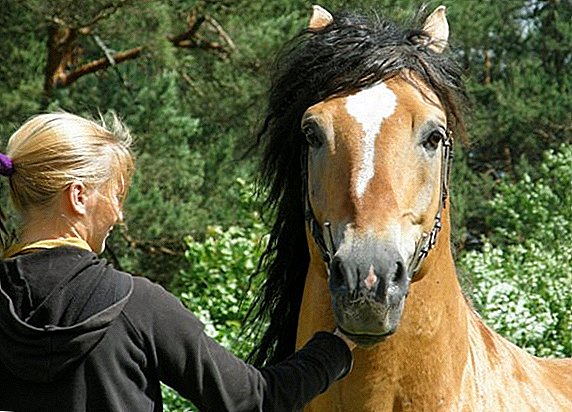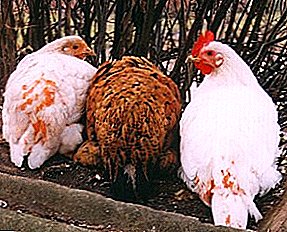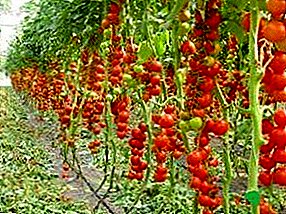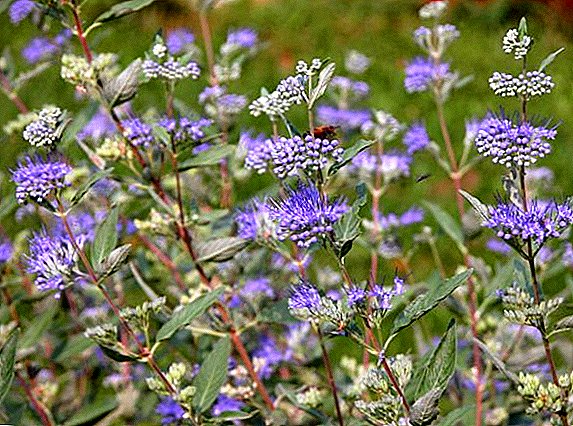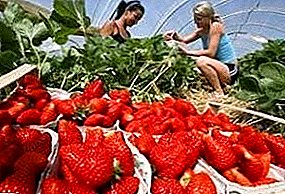
Strawberry - favorite of all gardeners - certainly present on all suburban areas.
Can not say she very demanding to carehowever, when grown in open ground, it does not give adequate returns on the effort expended.
Weather conditions, diseases, lack of heat, especially in the middle and north of our country.
The advantages of the greenhouse
A very different result can be obtained if you grow strawberries in the greenhouse on the plot. The advantages of growing strawberries and strawberries in the greenhouse are obvious. This will allow get several harvests a year, significantly reduce the risk of plant diseases and its dependence on weather conditions.
Observing the desired temperature, humidity and watering can be grown berries, which has the best taste and appearance, while maintaining its maximum useful properties.
Technology
In fact, there are two technologies for growing strawberries - Russian and Dutch. But we must pay tribute to our inventive gardeners, who immediately figured out how to reduce the price of Dutch technology.
Russian
 The technology of growing strawberries in the greenhouse is as follows: the greenhouse is divided into beds (their number depends on the size of the structure) 1 m wide. Bushes are planted in the prepared soil at a distance of about 30 cm from each other. Can set down in rows or staggered.
The technology of growing strawberries in the greenhouse is as follows: the greenhouse is divided into beds (their number depends on the size of the structure) 1 m wide. Bushes are planted in the prepared soil at a distance of about 30 cm from each other. Can set down in rows or staggered.
Dutch
This method gives a high yield due to the greater number of plants per 1 square. m greenhouses. How to grow strawberries on this technology? Instead of beds built tiers, on which are located pots with seedlings. 1 pot - 1 plant. The number of tiers depends only on how high it is convenient to handle the gardener. Benefits this way are obvious:
- higher yield;
- berry picking convenience;
- less risk of disease, because the berry does not touch the ground;
- high quality of the products obtained due to the fact that the plant in abundance receives light, oxygen and heat;
- water saving for irrigation.
Russian response to Dutch technology
Our gardeners did not slow down the price of Dutch technology, offering an alternative to pots in the form of plastic bags. The ground is poured into them and holes are made from above, into which strawberry sockets are planted.
Variety selection
Choosing the right strawberry varieties for a greenhouse is half the battle. How to grow strawberries in the greenhouse and what varieties need to be planted? When choosing planting material should pay attention to the following parameters:
- the size of the berries and their taste;
- remontant varieties;
- neutrality with respect to daylight;
- the region for which the hybrid is bred;
- yield;
- disease resistance;
- self-pollinated varieties of strawberries.
 If strawberries are grown for sale, then the best strawberry varieties for the greenhouse are it is dense and not watery, with medium-sized berries. It withstands transportation well and sells better than small or large.
If strawberries are grown for sale, then the best strawberry varieties for the greenhouse are it is dense and not watery, with medium-sized berries. It withstands transportation well and sells better than small or large.
The following varieties have proven themselves:
Alba - an early grade with large berries and high shipping qualities, is steady against diseases;
Octave has the same qualities as Alba;
Queen Elizabeth - remontant variety, large sweet berry of medium density, bears fruits not only on bushes, but also on sockets of the same year, suitable for transportation, requires annual renewal;
Honey - large dense berries up to 45 g, has a high immunity and is resistant to temperature changes.
Alice - unpretentious, with good immunity and large berries;
Christine - early ripe, suitable for transportation.
First of all, the strawberry yield in the greenhouse depends on the choice of the variety and the cultivation technology. When creating optimal conditions and proper care of the plant will give several harvests a year.
The following factors affect yield:
- growing method;
- greenhouse selection;
- quality of planting material;
- temperature, humidity and watering;
- properly selected fertilizers;
- disease resistance;
- light mode;
- properly selected pollination mode.
Year-round
 How to grow strawberries in the greenhouse all year round? Breeding strawberries in the greenhouse requires some knowledge and compliance technology. Then a good result will be provided.
How to grow strawberries in the greenhouse all year round? Breeding strawberries in the greenhouse requires some knowledge and compliance technology. Then a good result will be provided.
Choosing a greenhouse
This is an important factor, because the greenhouse must meet such requirements as good thermal insulation, light conductivity, strength and resistance to adverse weather conditions.
The most suitable options are glass and polycarbonate. How to build a greenhouse for growing strawberries with their own hands, read on our website.
Planting material
From its quality in many ways depends on the final resulttherefore, it is better to purchase it in proven nurseries. The second option - more reliable - to grow it yourself from the already proven varieties. It is best to select planting material from plants grown in open ground.
To do this, during the summer, select the most powerful, well-fruiting bushes. Mark them with an inscription. At the end of July collect the strongest, well-established mustache with a developed outlet. They can be transplanted into a separate place so that by mid-autumn (approximately the end of October) they can be transferred to a permanent place in a greenhouse.
Soil preparation
When growing strawberries using Russian technology, the soil is prepared as follows:
- the bottom of the prepared bed is filled with expanded clay or fine gravel for 5-7 cm;
- followed by a layer of sand from 8 to 10 cm;
- on top of the sand is a layer of fertile soil and fertilized with superphosphate and ammonium nitrate (10 g per 1 sq. m).
Peat can be added to the soil; it will not only give it porosity, but also provide the necessary level of acidity. In addition to these fertilizers can also make potassium chloride (15 g per 1 sq. M). In Dutch technology, when using pots, the soil must be sterile, non-toxic and porous. You can use steamed peat with sand, coconut fiber, or perlite. The soil should be prepared well before planting strawberries.
Do not use for strawberry land after potato or cruciferous crops (all types of cabbage, salads, radishes). The most suitable land on which cereals were grown.
Landing
Landing is done from late October to late November or at the end of February - early March. For the disembarking of sockets in the garden, recesses of 8-10 cm are made. The distance between the bushes It should be about 30 cm. In order to avoid long-term adaptation of the plant to a new place, it is best to transfer the planting material with transshipment, leaving more ground on the roots.
When landing the ground cannot be filled with earth. Immediately after planting, the soil is mulched with sawdust to preserve moisture. Cover the bed with a film in the greenhouse is not worth it, it can lead to stagnant moisture and rotting of the roots. The first days in the greenhouse must be maintained at a temperature not lower than 25 °, in the subsequent it can be gradually lowered to 15 °.
Photos of strawberries in the greenhouse:




Care features
Strawberry is a great capricious woman, therefore it is important for a good harvest. strict compliance with the rules of care for her.
Pollination
If you do not take care of pollination, the crop can not get at all. This is the main difficulty of growing greenhouse strawberries. In the open ground it is pollinated by insectsusing wind and rain. For strawberries in the greenhouse, you can use the following equipment and methods:
- Organize wind with fans. They will create a movement of air that will transfer pollen from one plant to another. At 100 square meters. m enough 3 fans. They are included only in the flowering period. A few hours a day will be quite enough. To grow remontant strawberries in a greenhouse - this will have to be done more often, as they bloom several times a season. In this case inclusion should be done up to 3 times a week for 3-4 hours. Efficiency up to 90%.
- If the greenhouse is large, you can put a hive with bees in it. However, this method has a number of difficulties.Space for the departure of bees is not enough, so they will have to release. In addition, they can sting. But the pollination efficiency is up to 95%.
- Spraying water from their stationary sprayers - the organization of artificial rain. Due to the adhesion of pollen to moisture, the pollination efficiency is only 45%.
- With not very strong wind and warm weather you can just make a draft in a greenhouse, opening windows or doors from opposite sides.
Temperature and humidity
If after planting the temperature can be lowered to 15 °, then as the vegetative mass is picked up and the plant is prepared for flowering, the temperature must be raised again.
 For this period it should not be below 18 °. During flowering need to maintain a temperature of 22-25 ° in order to avoid dropping of the ovary.
For this period it should not be below 18 °. During flowering need to maintain a temperature of 22-25 ° in order to avoid dropping of the ovary.
Important! Too high a temperature will lead to increased leaf growth to the detriment of the quality of the fruit.
Humidity is an important indicator. for plant development. After planting for the best development of seedlings, it should not be below 85%. When the seedlings take root, it is gradually reduced to 75%. During flowering and fruiting air humidity should not exceed 70%.
Illumination
Lighting directly affects the yield of strawberries. This is especially important if you grow strawberries in a greenhouse in winter. On average, in winter, the light day for a plant should be at least 12 hours. You can extend it as follows, including artificial lighting:
- in the morning from 8 to 11;
- in the evening from 5 to 8 pm
For the organization of additional lighting in the greenhouse suitable fluorescent lamps with a blue spectrum. To grow strawberries with light, you can mount directly above the beds. They do not give heat and can not harm plants. You can also use mercury and sodium lamps, designed specifically for greenhouses. The sodium lamp has a color spectrum close to sunlight.
Watering
The most convenient way - drip irrigation. It is good that you can dissolve fertilizers in water, the automatic system adjusts to the frequency and volume of watering. After planting and before flowering, a sprinkling method is used. Then it is replaced by watering under the root to avoid water from falling on the leaves. The rate of watering strawberries - 1 time in 10 days.
Top dressing
Feed strawberries need 1 time per week. Watering is done before fertilizing. Before the formation of ovaries make a liquid dressing. Often use bird droppings dissolved in a ratio of 1:15.
This composition is also used: potassium salt (17 g), phosphate fertilizer (20 g), ammonium nitrate (10) are diluted in 10 liters of water. Can use special fertilizers for strawberries, which are now available in a large assortment. Before the start of fruiting, the liquid feeding is stopped.
Diseases and their prevention.
 Greenhouse is not a complete protection against the occurrence of various diseases in the plant.
Greenhouse is not a complete protection against the occurrence of various diseases in the plant.
But prevent is easier than curetherefore, measures should be taken to prevent them:
- regularly air the greenhouse;
- do not plant seedlings too close to each other;
- do not transfuse the plant;
- time to fertilize.
Major Diseases
- White rot. It occurs when the humidity is too high, it is practically not treated. The diseased plant is immediately removed and burned. For prophylaxis you can dry the air in the greenhouse;
- White spotting. The cause of the appearance is excessive watering and high humidity. It is treated with Falcon, Euparin or copper sulfate preparations according to the instructions to them;
- Mealy dew. The reason is high humidity and low temperature.. It is treated with copper sulfate or soap solution (4%). It is best to remove the diseased plant and adjust the temperature and humidity;
- Late blight. It affects the roots of the plant. Symptom - redness of the roots can not immediately detect. Therefore, if at the end of May the plant begins to dry, it must be undermined and checked the roots.
Growing in a strawberry greenhouse costs - labor and financial. But the result is worth it. When the rest take out the frozen berry from the fridge, you can feast on it directly from the bush. Successes and tasty bountiful harvest!
Watch the video of how to grow strawberries in a greenhouse:


